People travel Ireland for a variety of reasons, whether it is to experience the vibrant pub scene, to visit historic sites and ancient ruins, or to explore the island’s wonderful natural attractions such as the the Cliffs of Moher.
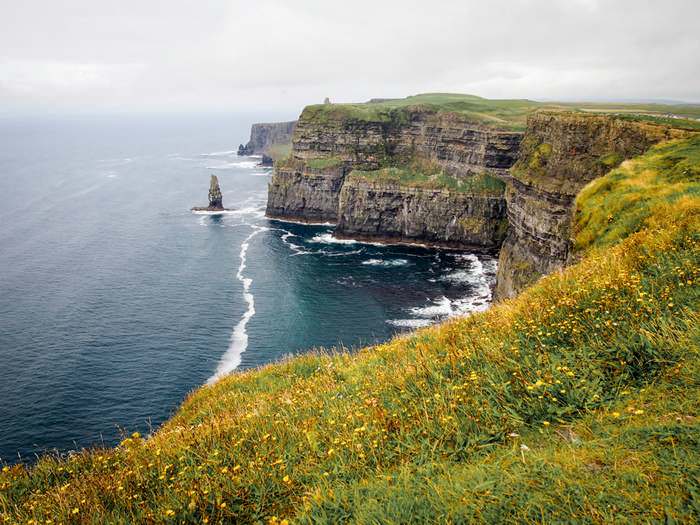
Wildflowers atop the Cliffs of Moher
Ireland, nicknamed the “emerald isle” for its green landscapes, is a place characterized by one of the world’s most beautiful countrysides. Rural Ireland is enchanting—there really isn’t a better word to describe it—a place made up of tiny stone villages that dot rolling farmlands, rugged hills and forest-covered slopes. When visiting Ireland, it is easy to see why local folklore and legends feature elves, fairies and leprechauns. Its remote, sometimes even desolate, regions are often covered by a layer of mist or overshadowed by thick clouds, creating a magical atmosphere that tickles people’s imagination.
This amazing country is home to many fascinating attractions, from the hustle and bustle of Dublin to the lakes of Connemara, the wildness of the Ring of Kerry and the breathtaking medieval ruins of places like Cashel. However, one of Ireland’s most popular attractions—arguably the most popular natural attraction on the entire island—is the epic Cliffs of Moher.
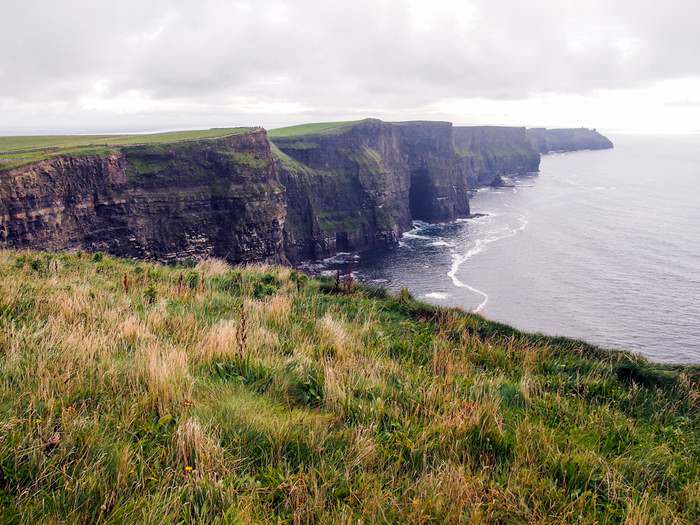
Looking southward along the Cliffs of Moher
Located in County Clare at the southwestern fringe of the barren rock-strewn landscape known as the Burren on Ireland’s west coast, the Cliffs of Moher are easily among the most spectacular coastal cliffs in the world. Rising 390 feet (120 meters) above the Atlantic Ocean—their highest point is 702 feet (214 meters)—and extending along five miles (eight kilometers), the cliffs receive no fewer than a million visitors on an annual basis.
An astonishing place, a place where the lush Irish fields and meadows abruptly drop into the ocean below, this is one of Ireland’s “must-see” destinations. The cliffs are part of the fairly new—founded in 2011—Burren and Cliffs of Moher Geopark, which is part of a collection of geotourism destinations across Europe, known as the European Geoparks Network.
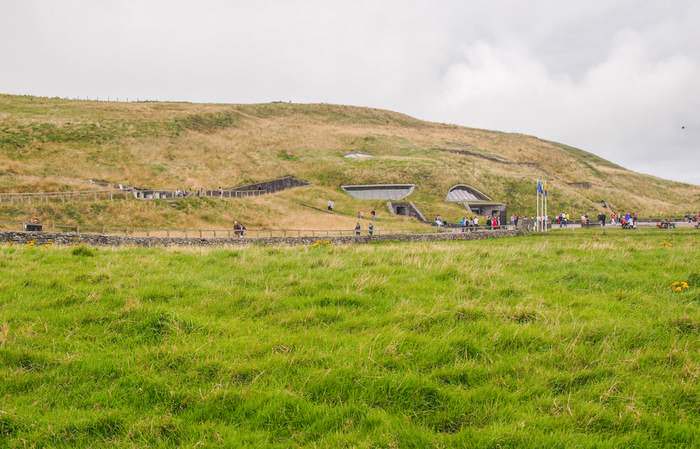
Cliffs of Moher Visitor Experience
What sets this particular place apart from many other similar attractions is its revolutionary visitor center. The Cliffs of Moher Visitor Experience, as it’s officially called, was built within a hillside just inland of the cliffs. It is intended to be as environment-friendly as possible, using renewable energy including geothermal heating and cooling, grey water recycling and solar panels. Barely visible from the outside—its incorporation into the hillside is truly remarkable—, this world-class visitor center is a highlight in itself, also featuring exhibits on the cliffs’ geology, history, and plant and animal life.
The best way to experience and explore the Cliffs of Moher is to strap on comfortable shoes and go for a hike. There are three viewing platforms located along the cliffs—the Main, North and South platforms—which are all accessed via a walking trail. This trail is, in fact, part of a much longer long-distance trail that runs along the coast. Avid hikers might even choose to stay at one of the nearest villages, Liscannor or very popular Doolin, and hike to the cliffs along this trail.
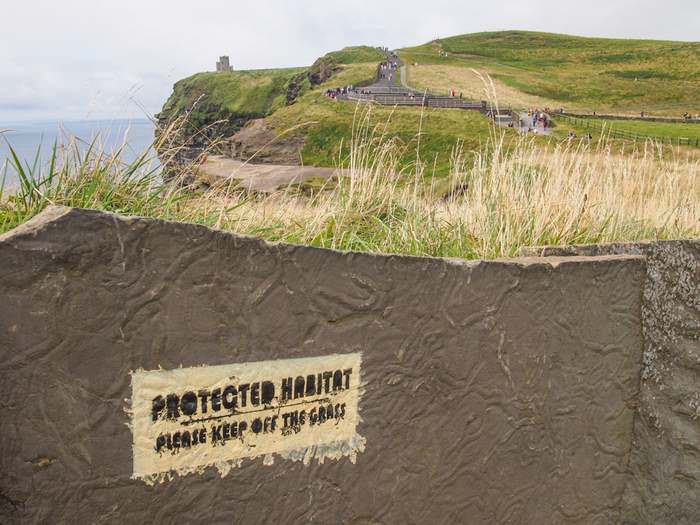
The cliffs are home to fragile plant and animal life
One of the major highlights at the Cliffs of Moher is O’Brien’s Tower, an old stone tower located near the highest point of the cliffs. Constructed in 1835, this tower is now open to the public and can be climbed for a small additional fee. Needless to say, the views are absolutely phenomenal. However, people who don’t want to pay the extra fee to climb the tower can enjoy views that are basically equally as great from the walking trail and platforms.
Another popular thing to do is birdwatching. These cliffs are one of the most important nesting grounds of seabird colonies in Ireland. Birdwatching is nothing short of extraordinary, this being the location of Ireland’s largest seabird colony. The colony includes nine different bird species and about 30,000 breeding pairs. The most iconic species of them all are the puffins, which nest at the Cliffs of Moher from April through July. Other notable bird species that can be seen are guillemots, kittiwakes and razorbills.
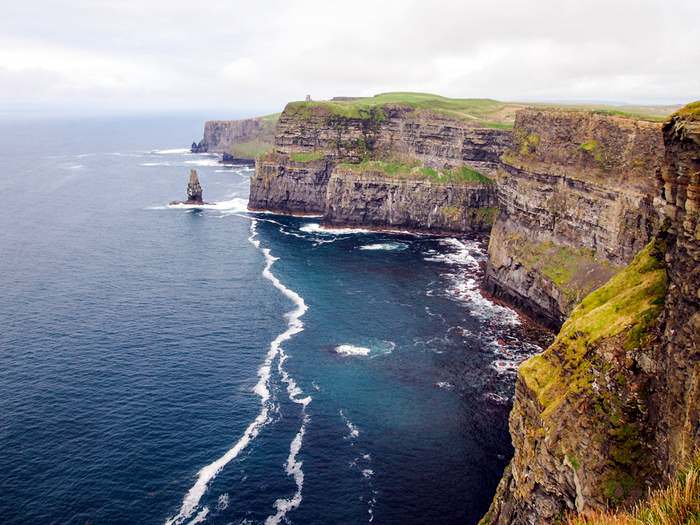
Waves crashing into the cliffs
A visit to the Cliffs of Moher may last from an hour to a whole day, depending on the things you want to do, but also on the weather and even on the number of other visitors. It can get pretty crowded. Especially during the summer months of July and August you’ll see busloads of tourists—the busiest time of day in the high season is between 11 am and 3 pm. So, for obvious reasons, you are advised to plan your visit before or after those hours in the high seasons, which incidentally will also be the best time for photography. In the low season, you can enjoy the Cliffs of Moher in relative peace all day long.
Written by and photos by Bram Reusen for EuropeUpClose.com

Ellie
Monday 17th of October 2016
This looks beautiful, we need to go to Ireland for a walking holiday! We've been to Scotland before with EasyWays and it was beautiful. Here's a link to the website if you're interested!
Tanja (the Red phone box travels)
Thursday 13th of October 2016
I'd love to visit it too!